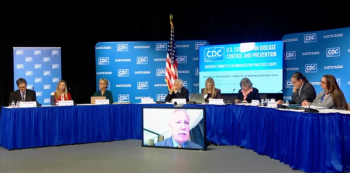
ICU-Acquired Lower Respiratory Tract Infections Associated with Increased Hospital Costs
Lower respiratory tract infections (LRTI) are the most common hospital-acquired infections on ICUs. They have not only an impact on each patients individual health but also result in a considerable financial burden for the healthcare system. Leistner, et al. (2013) sought to determine the costs and the length of stay of patients with ICU-acquired LRTI.
The researchers used a retrospectively matched cohort design, comparing patients with ICU-acquired LRTI and ICU patients without LRTI. LRTI was diagnosed using the definitions of the Centers for Disease Control and Prevention (CDC). The study period was from January to December 2010 analyzing patients from 10 different ICUs (medical, surgical, interdisciplinary). The device utilization ratio was defined as number of ventilator days divided by number of patient days and the device-associated LRTI rate was defined as number of ventilator associated LRTI divided by number of ventilator days. Patients were matched by age, sex, and prospectively obtained Simplified Acute Physiology Score II (SAPS II). The length of ICU stay of control patients needed to be at least as long as that of LRTI-patients before onset of LRTI. The researchers used the Wilcoxon signed-rank test for continuous variables and the McNemars test for categorical variables.
The analyzed ICUs had 40,772 patient days in the study period with a median ventilation utilization ratio of 56 (IQR 4265). The median device-associated LRTI rate was 3.35 (IQR 0.96-5.36) per 1,000 ventilation days. We analyzed 49 patients with ICU-acquired LRTI and 49 respective controls without LRTI. The median hospital costs for LRTI patients were significantly higher than for patients without LRTI (45,041 vs. 26,467 ; p<.001). The attributable costs per LRTI patient were 17,015 (p<.001). Patients with ICU acquired LRTI stayed longer in the hospital than patients without (36days vs. 24days; p=0.011). An LRTI lead to an attributable increase in length of stay by 9days (p=0.011).
The researchers conclude that ICU-acquired LRTI is associated with increased hospital costs and prolonged hospital stay. Hospital management should therefore implement control measurements to keep the incidence of ICU-acquired LRTI as low as possible. Their research was published in
Reference: Leistner R, Kankura L, Bloch A, et al. Attributable costs of ventilator-associated lower respiratory tract infection (LRTI) acquired on intensive care units: a retrospectively matched cohort study. Antimicrobial Resistance and Infection Control 2013, 2:13 doi:10.1186/2047-2994-2-13
Newsletter
Stay prepared and protected with Infection Control Today's newsletter, delivering essential updates, best practices, and expert insights for infection preventionists.






